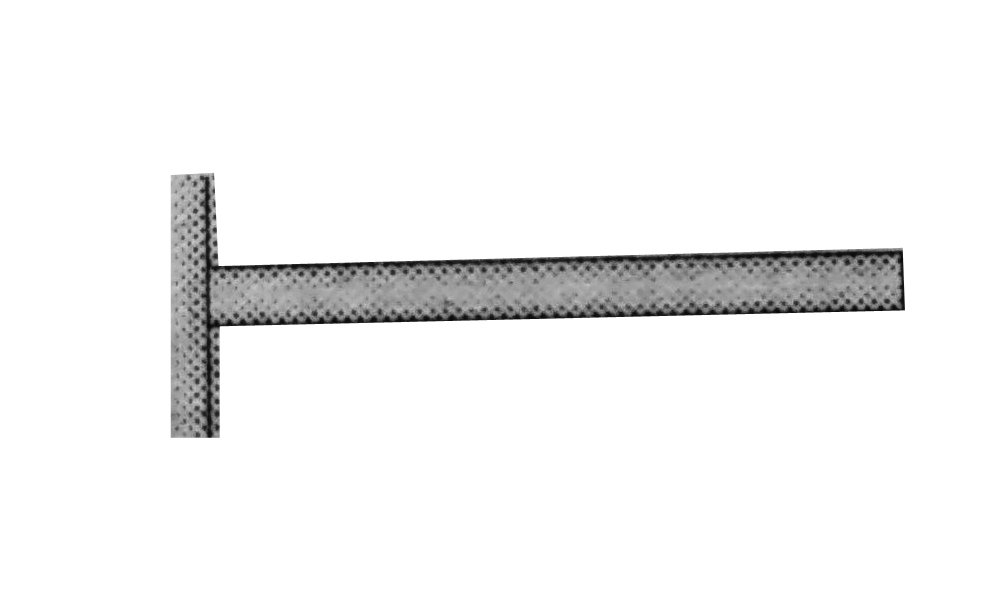STATEMENT - 1 : A metallic rod is clamped between two fixed support. The rod is heated but not allowed to bend. Tensile stress is developed in it.
STATEMENT - 2 : A metallic rod is fixed between two rigid supports. The rod is heated. The strain produced in the rod is ZERO because there is no change in length
STATEMENT - 3 : The practical value of Poisson's ratio lies between 0 and 0.5.
TTT
FTF
FFT
FFF
The correct Answer is:C
Step by step video, text & image solution for STATEMENT - 1 : A metallic rod is clamped between two fixed support. The rod is heated but not allowed to bend. Tensile stress is developed in it. STATEMENT - 2 : A metallic rod is fixed between two rigid supports. The rod is heated. The strain produced in the rod is ZERO because there is no change in length STATEMENT - 3 : The practical value of Poisson's ratio lies between 0 and 0.5. by Physics experts to help you in doubts & scoring excellent marks in Class 12 exams.
Topper's Solved these Questions
- BOOK - AAKASH INSTITUTECHAPTER - MECHANICAL PROPERTIES OF SOLIDSEXERCISE - Assignment (SECTION - I)4videos
MECHANICAL PROPERTIES OF SOLIDS
- BOOK - AAKASH INSTITUTECHAPTER - MECHANICAL PROPERTIES OF SOLIDSEXERCISE - Assignment (SECTION - J)1videos
MECHANICAL PROPERTIES OF SOLIDS
- BOOK - AAKASH INSTITUTECHAPTER - MECHANICAL PROPERTIES OF SOLIDSEXERCISE - Assignment (SECTION - G)2videos
MECHANICAL PROPERTIES OF SOLIDS
- BOOK - AAKASH INSTITUTECHAPTER - MECHANICAL PROPERTIES OF FLUIDSEXERCISE - SECTION - J9videos
MECHANICAL PROPERTIES OF FLUIDS
- BOOK - AAKASH INSTITUTECHAPTER - Mock test 03EXERCISE - EXAMPLE37videos
Mock test 03
Similar Questions
A copper rod is fixed between two supports. Its temperature was raised by 50∘C. What is the resulting stress in the rod?
View Solution
In the given figure, a rod is free at one end and other end is fixed. When we change the temperature of rod by Δθ, then strain produced in the rod will beView Solution
Knowledge Check
- Question 1 - Select One
When a rod is heated but prevented from expanding, the stress developed is independent of
AMaterial of the rodBRise in temperatureCLength of rodDNone of above - Question 2 - Select One
STATEMENT - 1 : When a rod lying freely is heated, no thermal stress is developed in it.
and
STATEMENT - 2 : On heating, the length of the rod increase.AStatement-1 is True, Statement-2 is True, Statement-2 is a correct explanation for Statement-1BStatement-1 is True, Statement-2 is True, Statement-2 is NOT a correct explanation for Statement-1CStatement-1 is True, Statement-2 is FalseDStatement-1 is False, Statement-2 is True - Question 3 - Select One
A metallic rod is continuously heated at its two ends, the flow of heat through the rod does not depend upon –
AThe area of cross section of the rodBThe mass of the rodCTimeDThe temperature gradient
If the end of metal rod is heated then the rate of flow the heat does not depend on
View SolutionSTATEMENT 1: A free rod when heated experiences no thermal stress.
STATEMENT 2: The rod when heated increases in length.View SolutionAn elastic metal rod will change its length when it
View SolutionA rod of aluminium is fixed between two rigid support. If the temperature of rod is increased by 10°C, then the thermal stress on the rod is (Take Y=7×1010Pa and α=2.4*10−5K−1)
View SolutionSTATEMENT - 1 : A metallic rod placed upon smooth surface is heated. The strain produced is ZERO.
STATEMENT - 2 : Strain is non-zero only when stress is developed in the rod.
STATEMENT - 3 : Two metallic rods of length l1 and l2 and coefficient of linear expansion α1 and α2 are heated such that the difference of their length ramains same at ALL termperatures Then α1α2=l2l1View Solution

